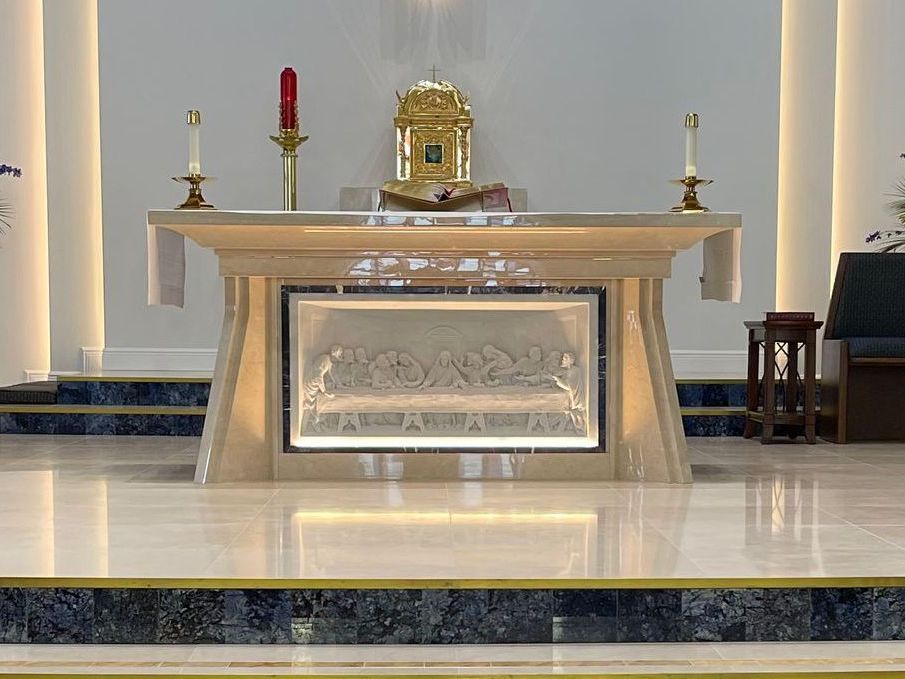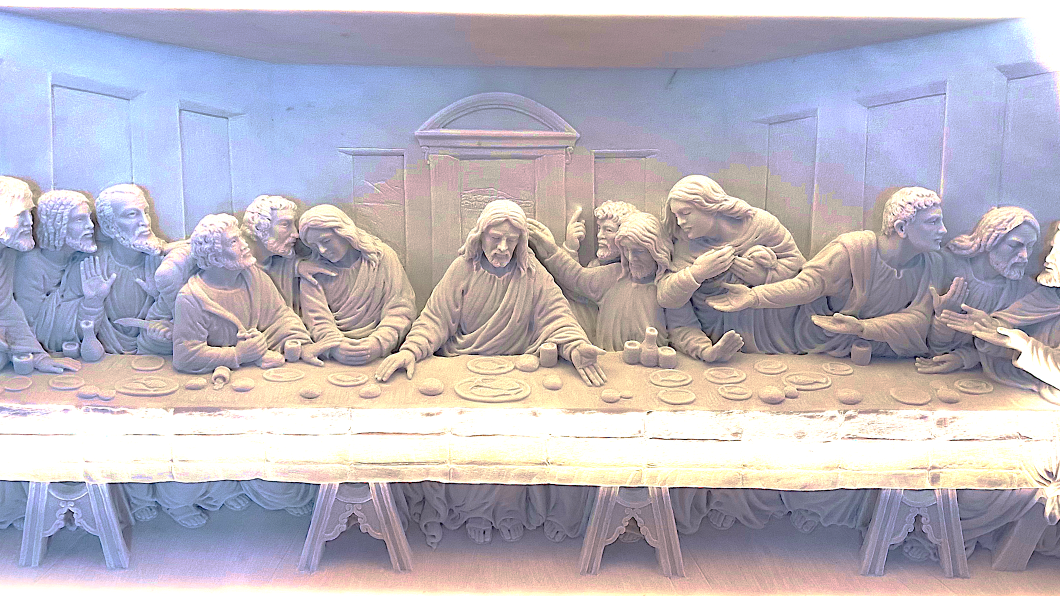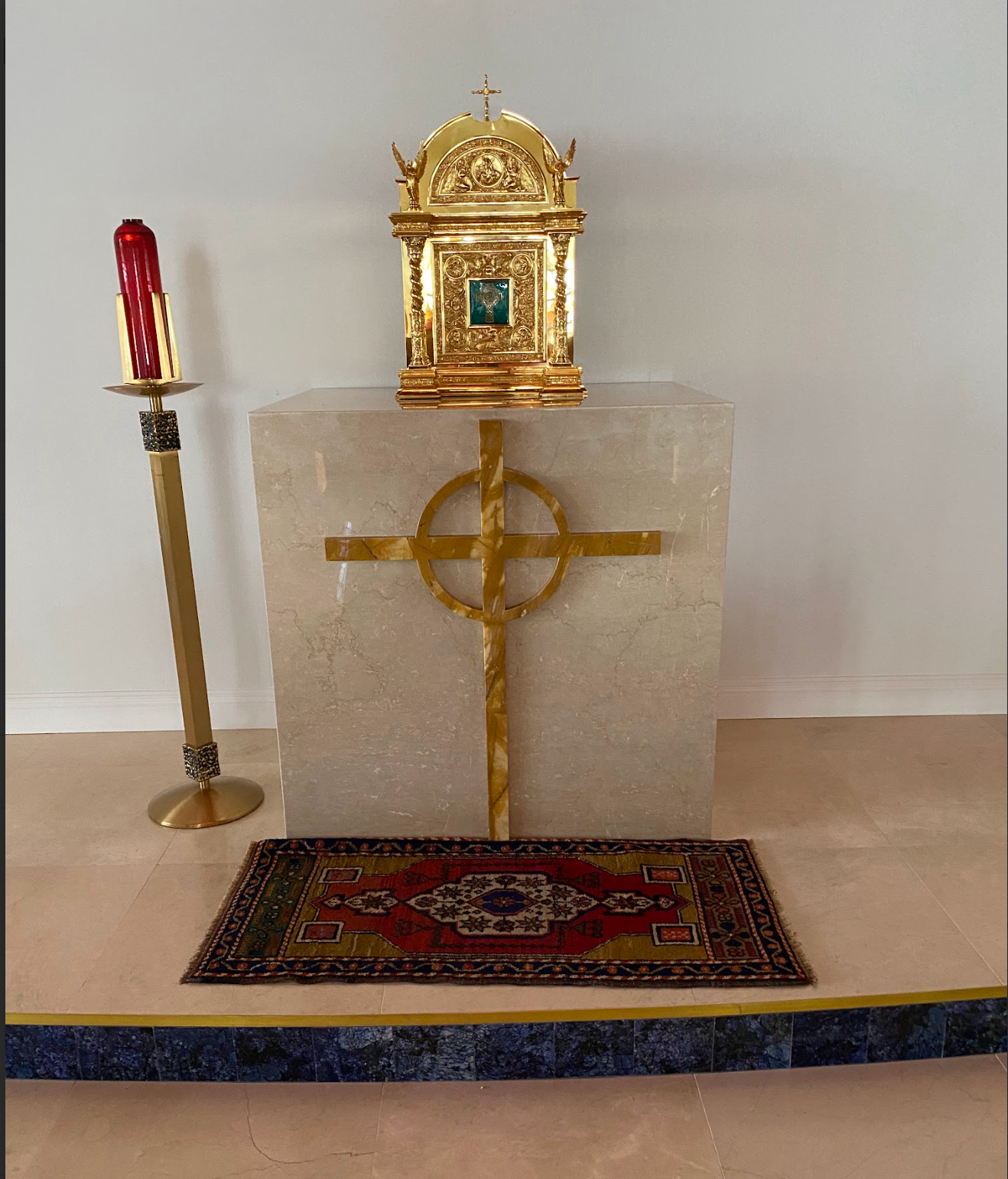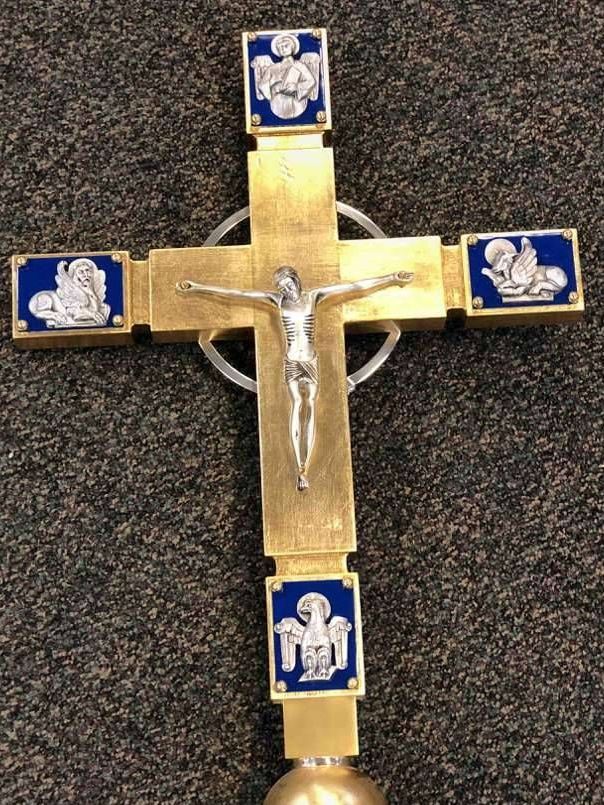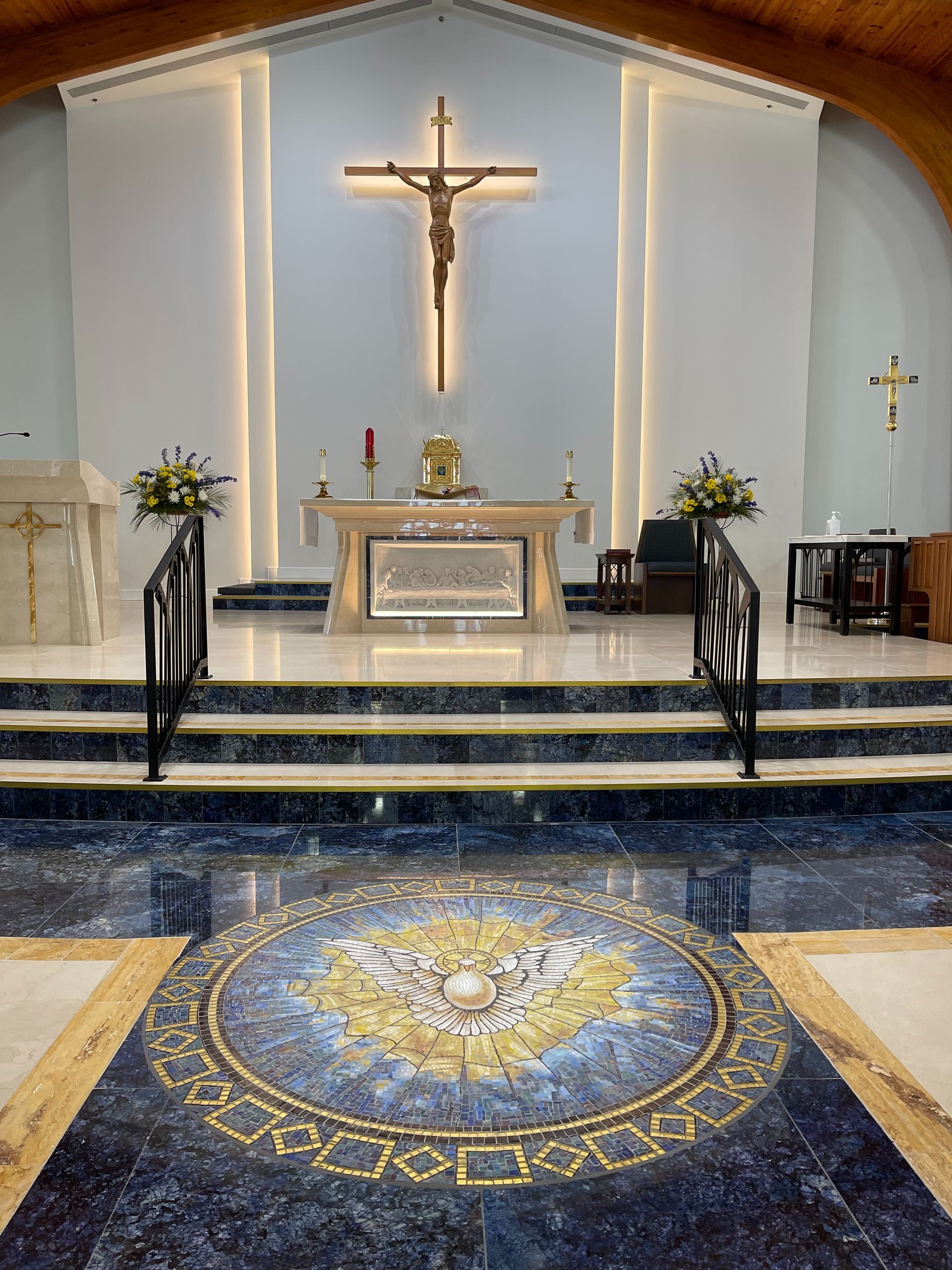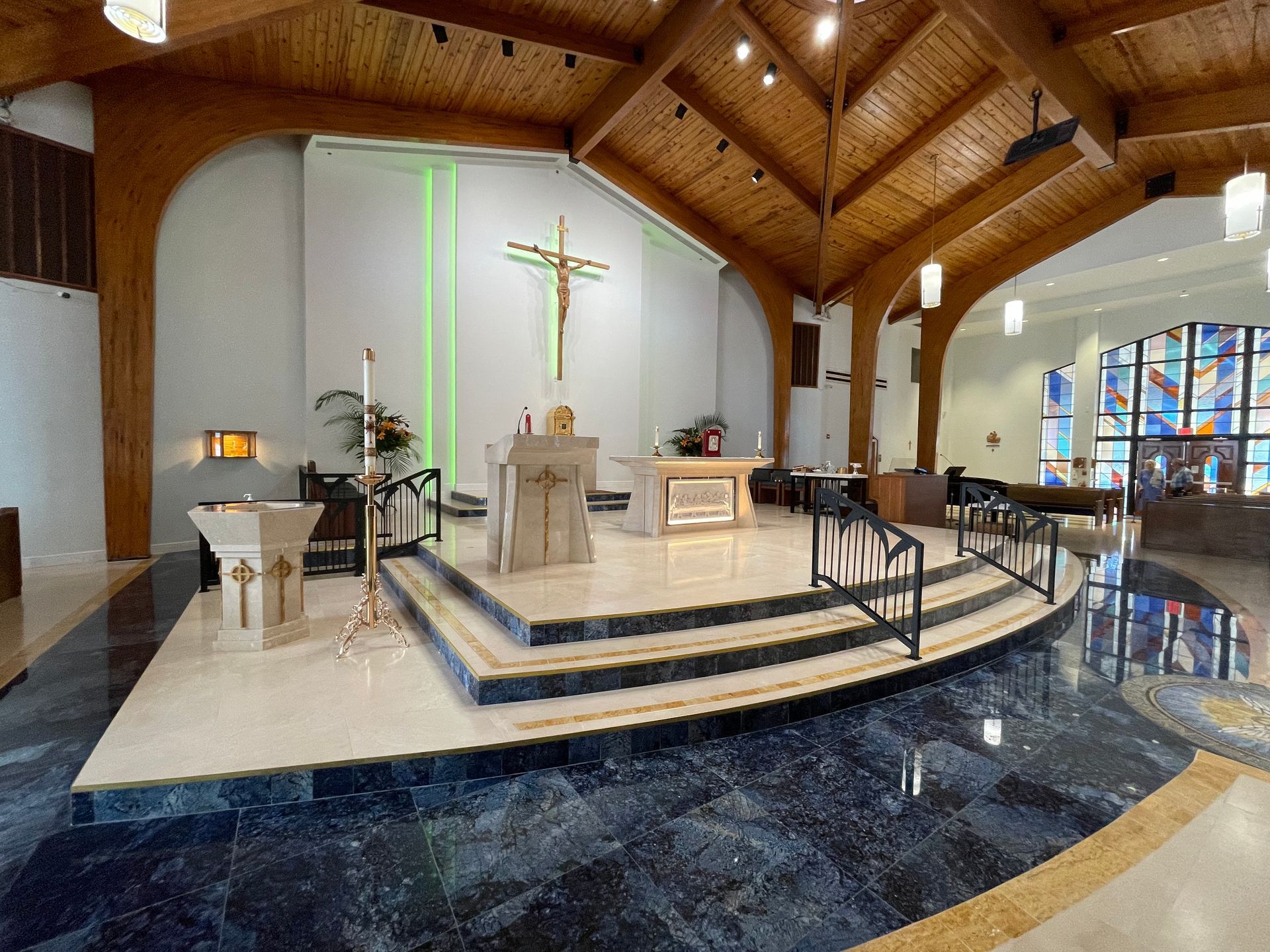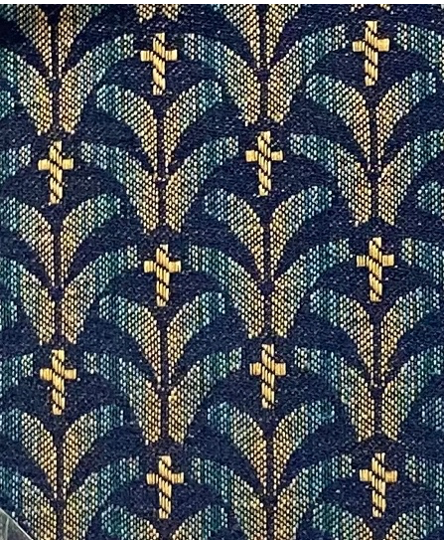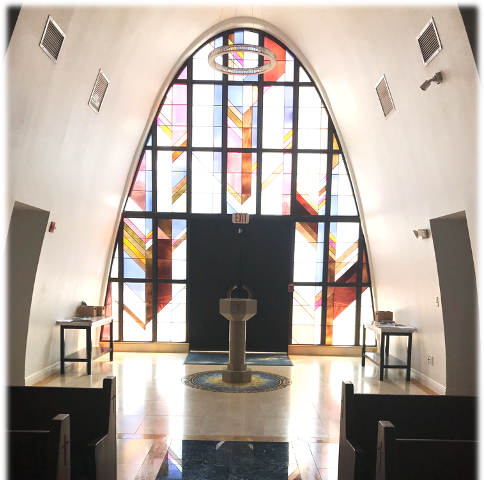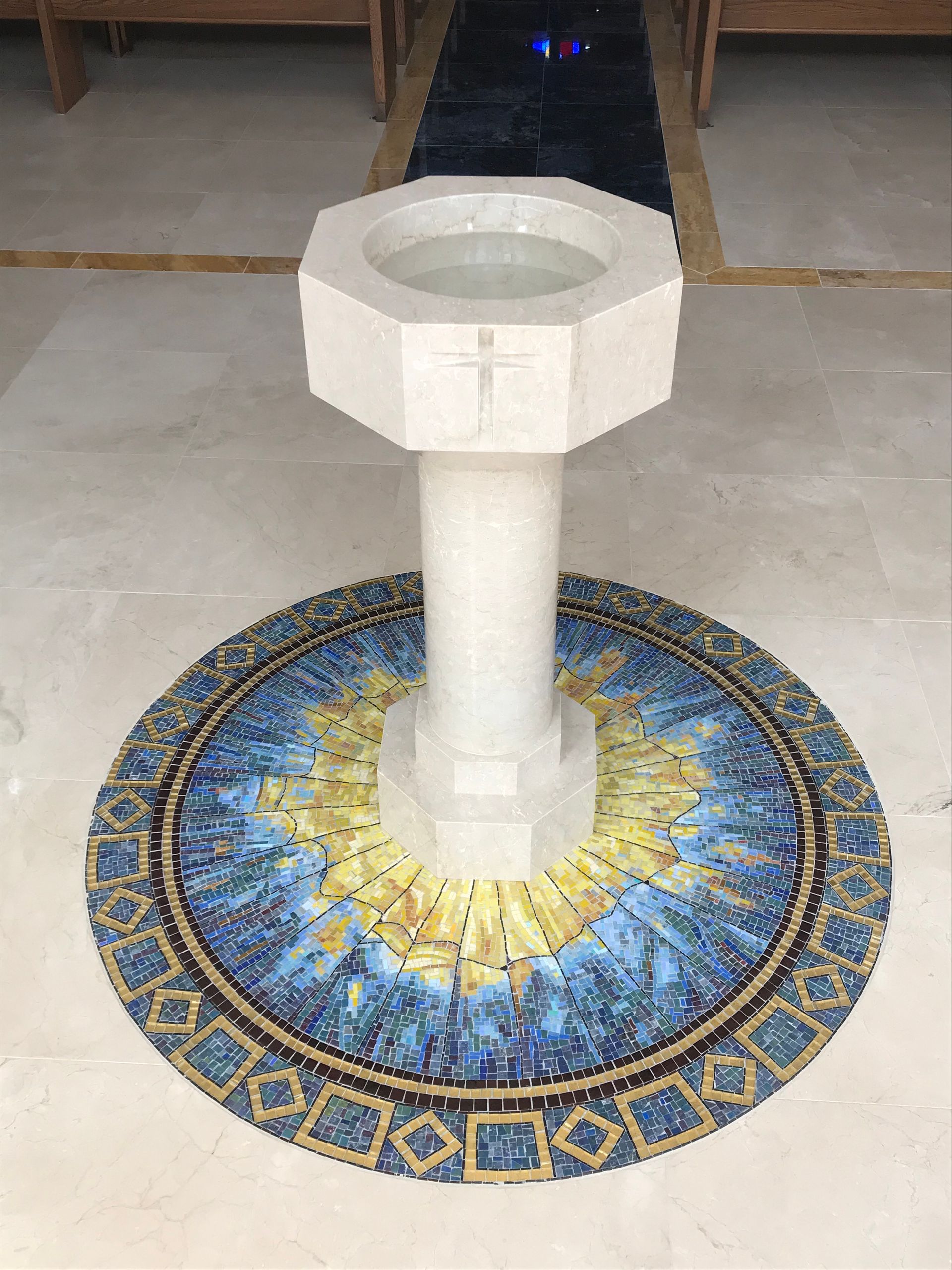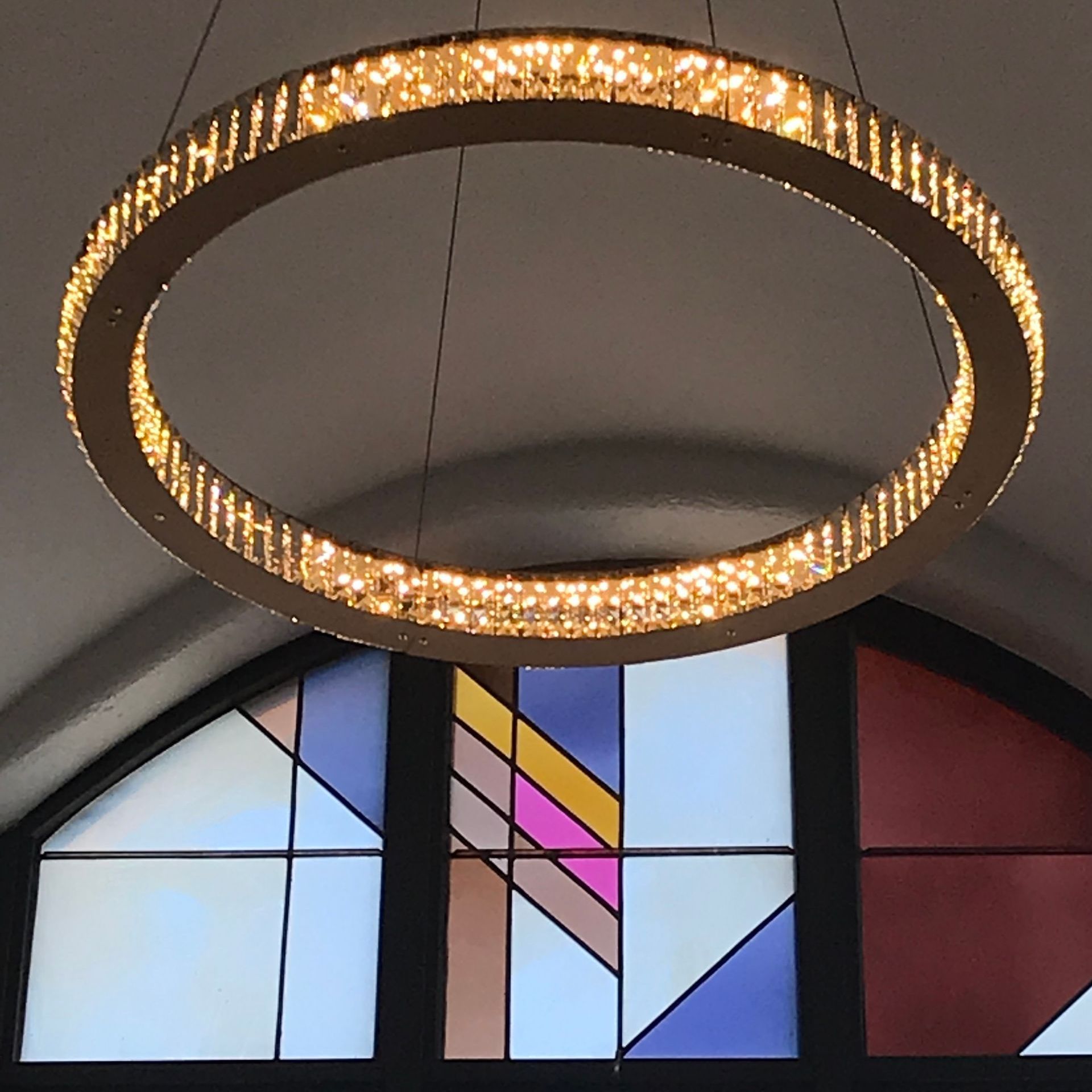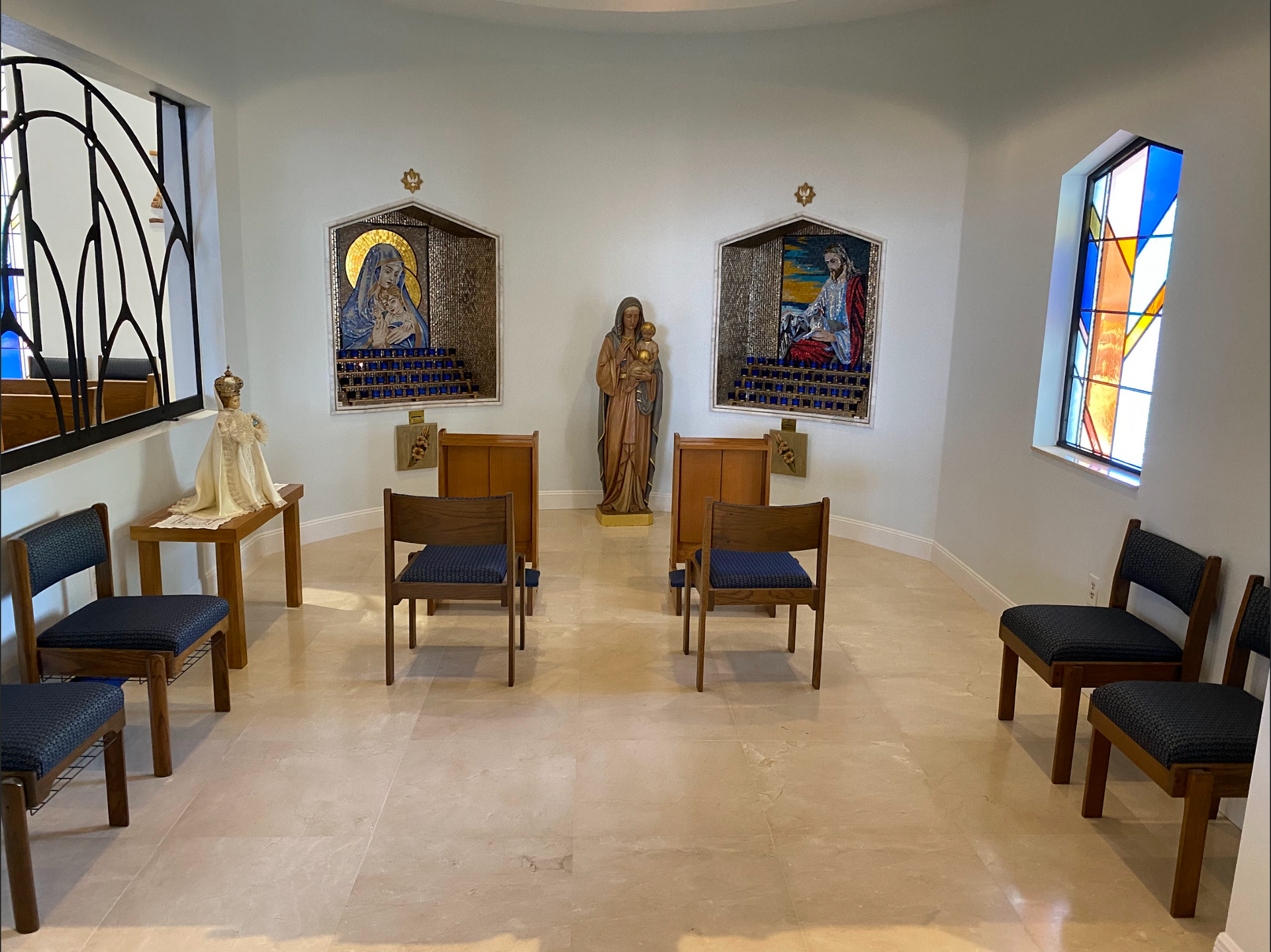Renovations
Our Renovated Place of Worship
At St. Michael the Archangel, our recently-renovated worship space is a sight to behold. With Italian marble, beautiful appointments, crisp, clean lines and a welcoming feel, we invite you to visit and take in the beauty that surrounds you.
Within the church, there are many unique features including a hand-carved replica of the Last Supper, which looks out on the congregation from it's place on the face of the altar. The stunning Holy Spirit mosaic, made up of over 10,000 individual tiles, lies just before the sanctuary. And the statue of our patron Saint, now sits in a prominent position above our South alcove.
To learn more about the individual areas of our renovation, please select items below for a full description.
Before Renovation After Renovation
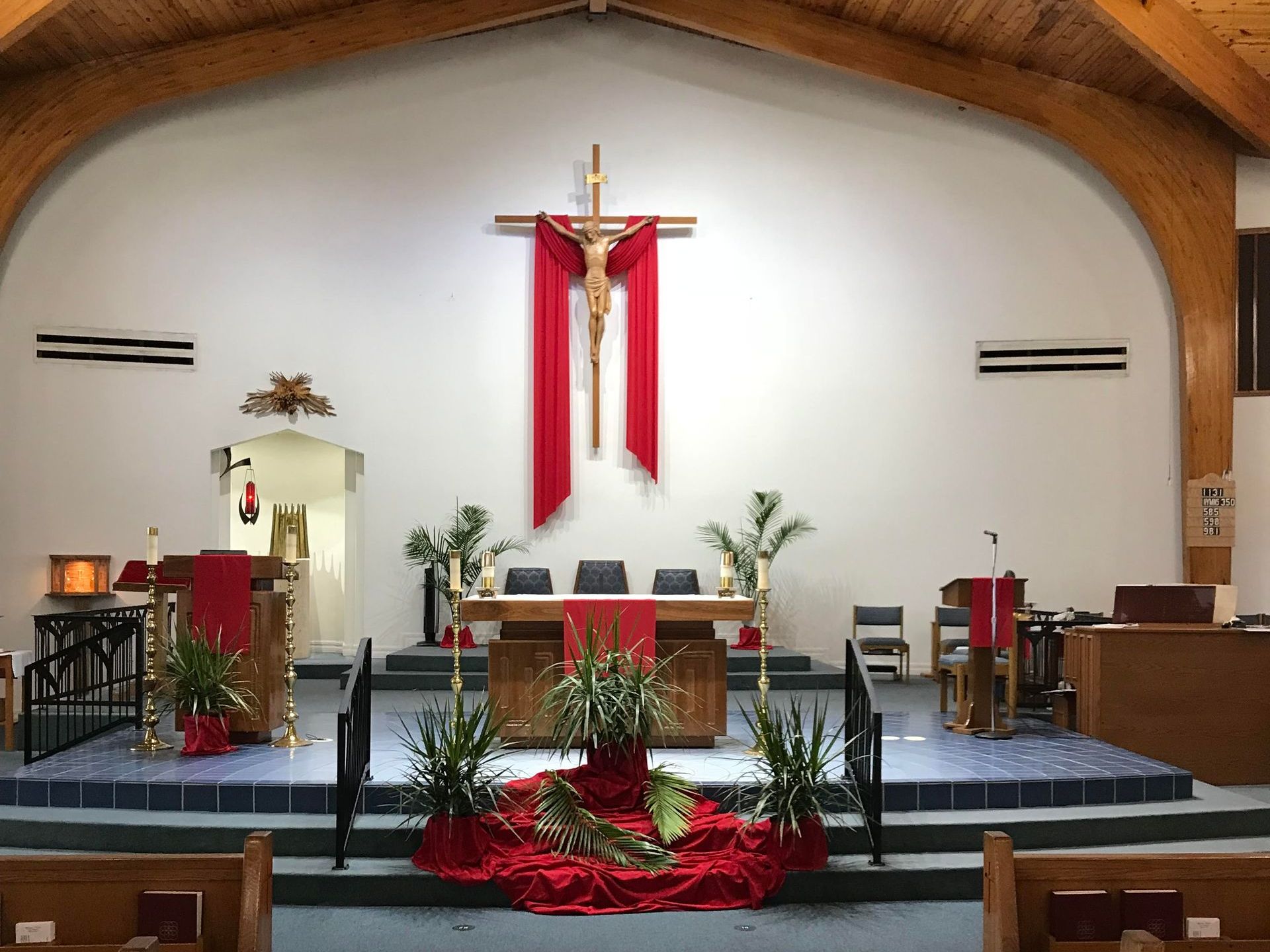
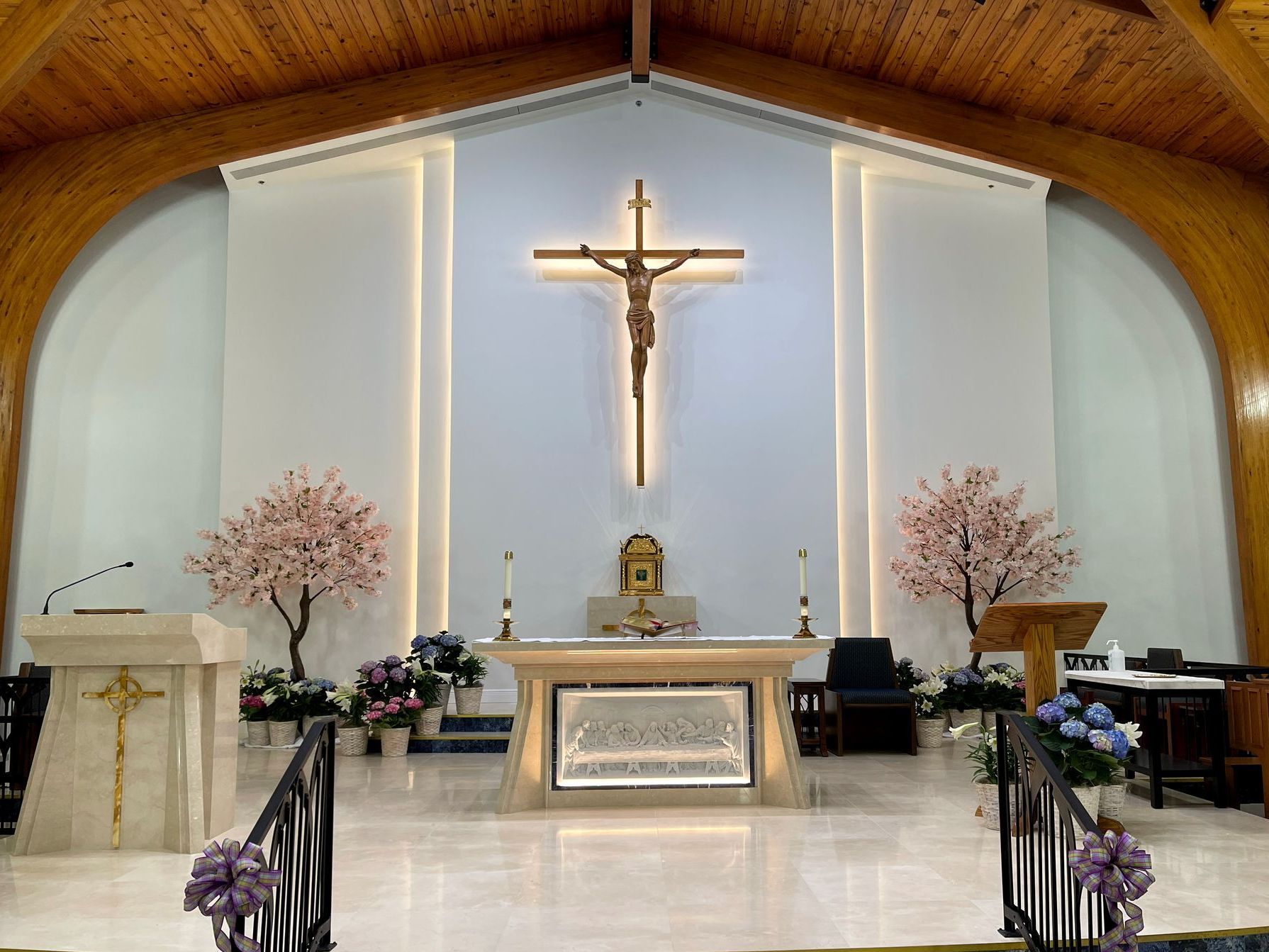
The Sanctuary
The sanctuary is a holy and sacred place, reserved for a specific function and is designed to facilitate our worship of God. All the liturgical furnishings and art within the sanctuary provide both function and beauty for the holy sacrifice of the Mass.
There are many different items within the sanctuary that are crucial to the Mass. The altar, upon which the sacrifice and consecration take place; the tabernacle, the sacred and beautiful home for the real presence of Christ in the Eucharist; the Ambo where the Word is proclaimed; the Crucifix from which our Lord hangs for our sins; and other symbolic items such as the candles and flowers.
Everything in the sanctuary was replaced during renovations, with the exception of the Crucifix, which is now backlit with a bright, new lighting system changing colors based on the season.
The Nave
What we refer to as the Nave is the central part of a church building, intended to accommodate the laity, or the congregation. In traditional Western churches it is rectangular, separated from the chancel - the space around the altar including the choir and the sanctuary - by a step or rail, and from adjacent aisles by pillars.
The Narthex
The entryway or vestibule to the church is referred to as the narthex. This architectural element of the early Christian church is located opposite the church's main altar. The narthex was designed between the third and fourth century for those who were not allowed to enter the main worship area, the nave, but who still wanted to hear the sermon.
The St. Michael the Archangel narthex serves as a vestibule where people gather. The volunteers room is located off of the narthex as well as the public restrooms and general information can be found in this area.
The Alcoves
Coming Soon

